A Deterioration Diagnosis Circuit of a Lithium-Ion Battery Using Microcomputer Implementing Z-Transform Convolution †
Abstract
:1. Introduction
2. Deterioration Diagnosis Method
2.1. Equivalent Circuit of Lithium-Ion Battery
2.2. Deterioration Diagnosis Method Using a Convolution Technique and z-Transformation
3. Experimental Results
3.1. Diagnosis Method Using Convolution
3.1.1. Deterioration Dependence
3.1.2. SOC Dependence
3.1.3. Temperature Dependence
3.2. Automatic Diagnosis Circuit
4. Conclusions
Author Contributions
Funding
Institutional Review Board Statement
Informed Consent Statement
Data Availability Statement
Conflicts of Interest
References
- Nagaoka, N. A numerical model of Lithium-ion battery for a life estimation. In Proceedings of the 48th International University Power Engineering Conference, Dublin, Ireland, 2–5 September 2013; Available online: https://ieeexplore.ieee.org/document/6714913 (accessed on 20 April 2016).
- Nagaoka, N. Large Scale Battery Storage System and its Lifetime Estimation. IEEJ Trans. Power Energy 2014, 134, 558–561. [Google Scholar] [CrossRef]
- Takano, T. Electric Power Storage Technology for Natural Energy Generations. IEEJ J. 2007, 127, 668–671. [Google Scholar] [CrossRef]
- Secondary Cells and Batteries Containing Alkaline or Other Non-Acid Electrolytes—Secondary Lithium Cells and Batteries for Portable Applications. Available online: http://www.zrlklab.com/uploads/image/202004/5ea79eb64c6fd.pdf (accessed on 15 May 2016).
- Hakozaki, H.; Sakamoto, T. Development of Battery Management System for Lithium-Ion Batteries. In FB Technical News; The FURUKAWA BATTERY CO., LTD: Kanagawa, Japan, 2014; Volume 70, pp. 39–42. Available online: https://corp.furukawadenchi.co.jp/ja/research/technews/main/010/teaserItems1/0/file/fbtn70_all.pdf (accessed on 28 May 2016).
- Ohde, T. Battery Technology for Quick Charging Plug-in Electric Boats. J. Jpn. Inst. Mar. Eng. 2012, 47, 23–27. [Google Scholar] [CrossRef] [Green Version]
- Hirai, T.; Ohnishi, A.; Nagaoka, N.; Mori, N.; Ametani, A.; Umeda, S. Automatic Equivalent-Circuit Estimation System for Lithium-Ion Battery. In Proceedings of the 43rd International University Power Engineering Conference, Padova, Italy, 1–4 September 2008; Available online: https://ieeexplore.ieee.org/document/4651678 (accessed on 4 June 2016).
- Osaka, T.; Momma, T.; Mukoyama, D.; Nara, H. Proposal of novel equivalent circuit for electrochemical impedance analysis of commercially available lithium ion battery. J. Power Sources 2012, 205, 483–486. Available online: https://www.researchgate.net/publication/257224351_Proposal_of_novel_equivalent_circuit_for_electrochemical_impedance_analysis_of_commercially_available_lithium_ion_battery (accessed on 8 June 2016). [CrossRef]
- Momma, T.; Matsuda, M.; Mukoyama, D.; Osaka, T. Ac impedance analysis of lithium ion battery under temperature control. J. Power Sources 2012, 216, 304–307. [Google Scholar] [CrossRef]
- Mukoyama, D.; Momma, T.; Nara, H.; Osaka, T. Electrochemical Impedance Analysis on Degradation of Commercially Available Lithium Ion Battery during Charge-Discharge Cycling. Chem. Lett. 2012, 41, 444. [Google Scholar] [CrossRef]
- Kumai, K.; Miyashiro, H.; Kobayashi, Y. Analysis technique for Estimating the Degradation Factors of Li-Ion Secondary Battery. In Report of Central Research Institute of Electric Power Industry; No. T73; Komae Research Laboratory: Tokyo, Japan, 2003; Available online: https://criepi.denken.or.jp/hokokusho/pb/reportDetail?reportNoUkCode=T73 (accessed on 9 July 2016).
- Yoshioka, N.; Narita, S.; Yamada, S.; Nagaoka, N. A Deterioration Diagnosis Method for Li-ion Battery Using a Transient Characteristic and Development of an Automatic Diagnosis Circuit. In Proceedings of the 50th International Universities Power Engineering Conference (UPEC), Stoke-on-Trent, UK, 1–4 September 2015; Available online: https://ieeexplore.ieee.org/document/7339946 (accessed on 18 April 2016).
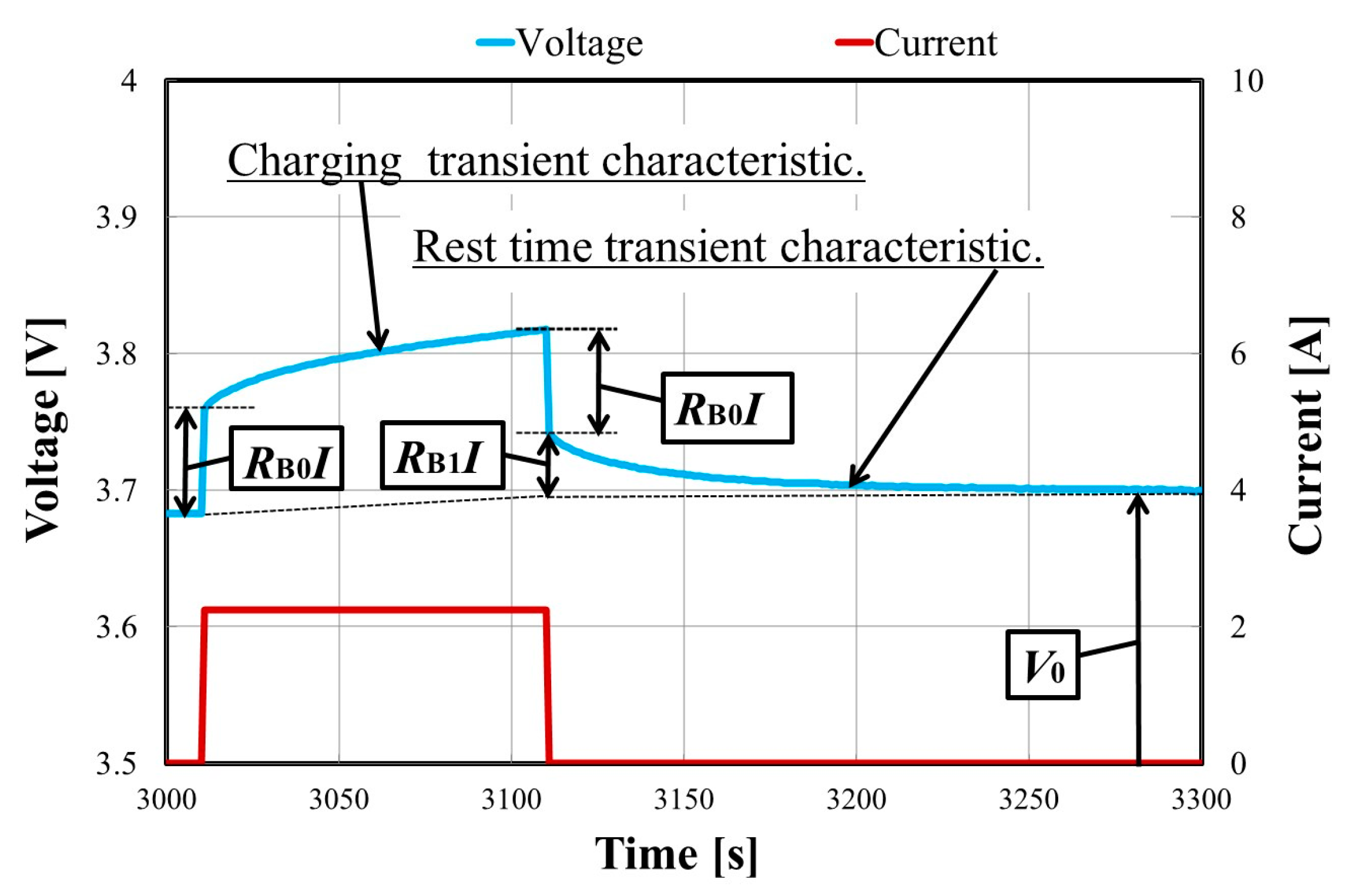

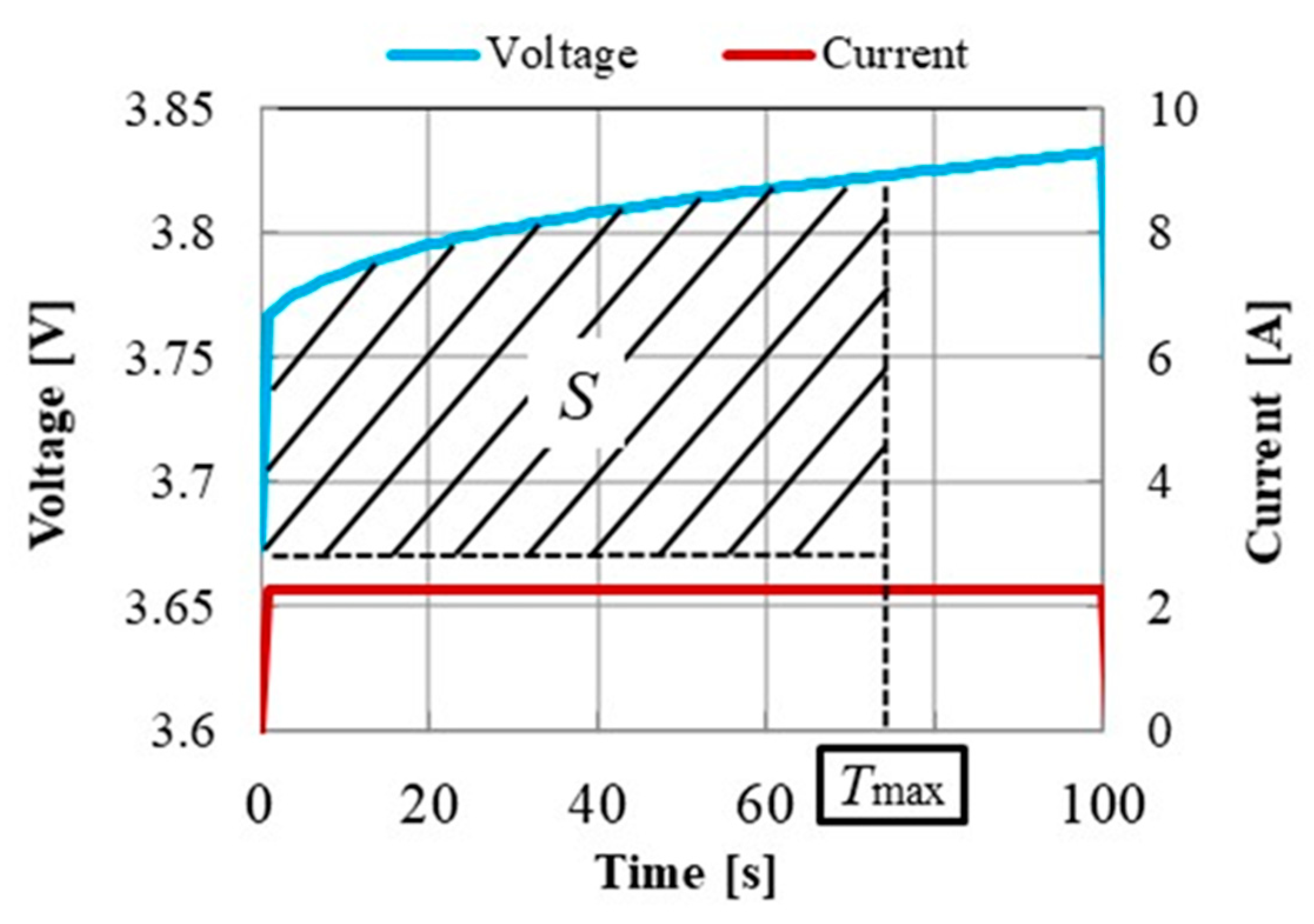
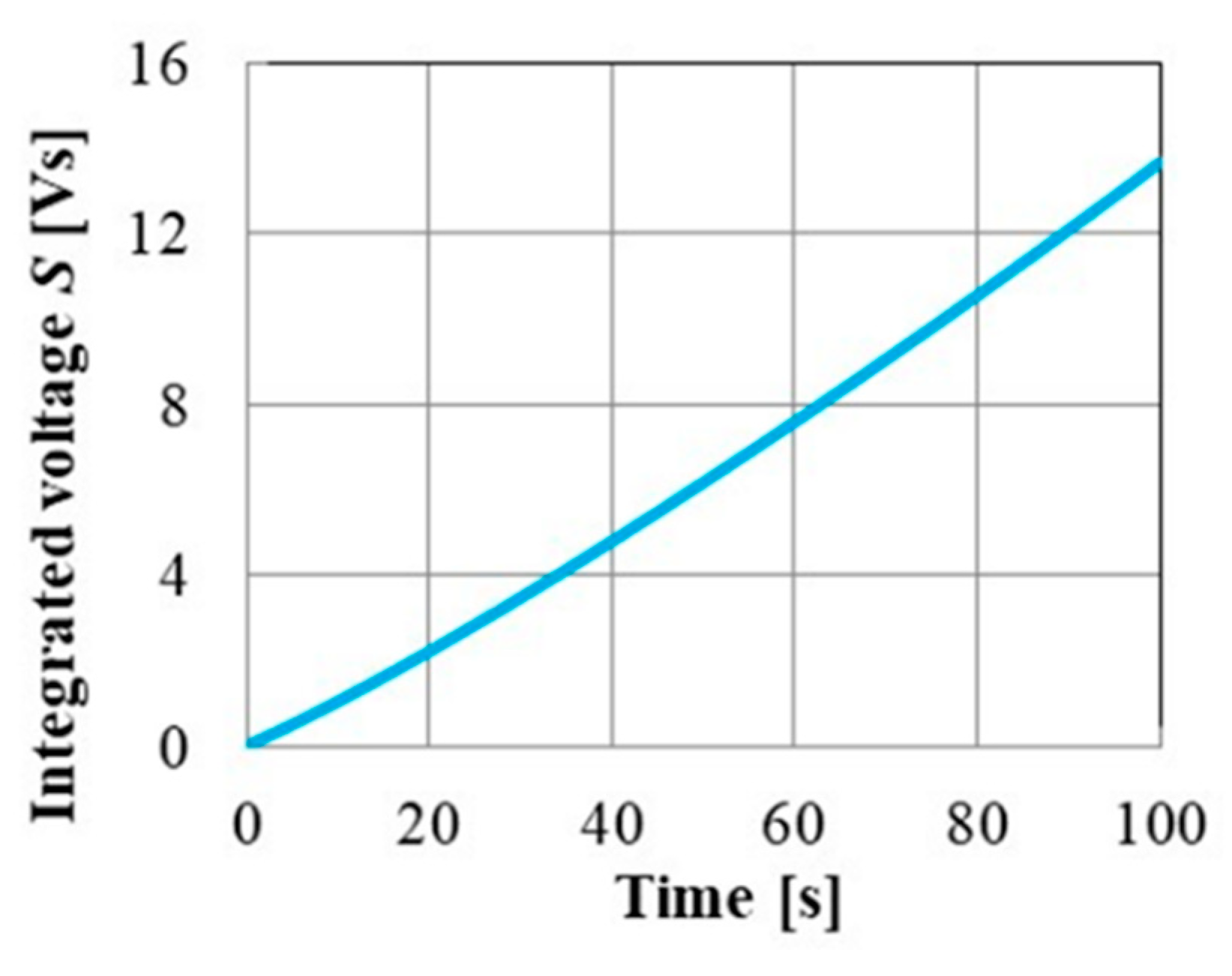
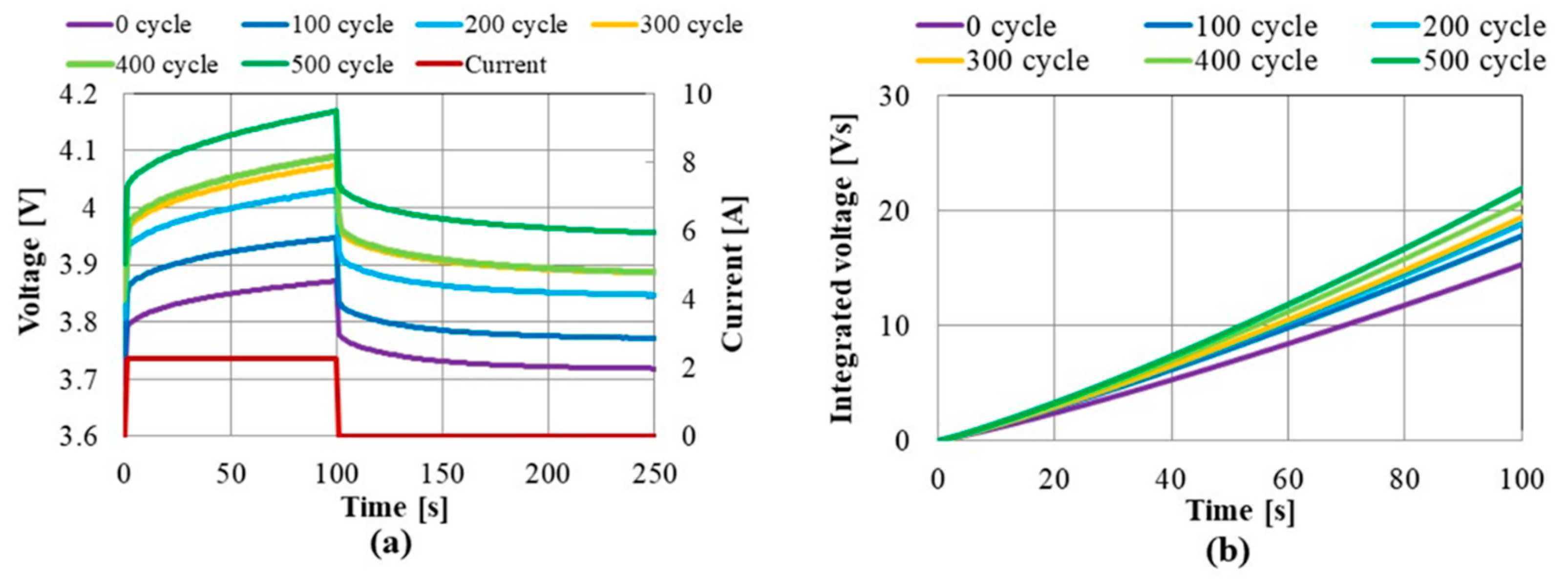

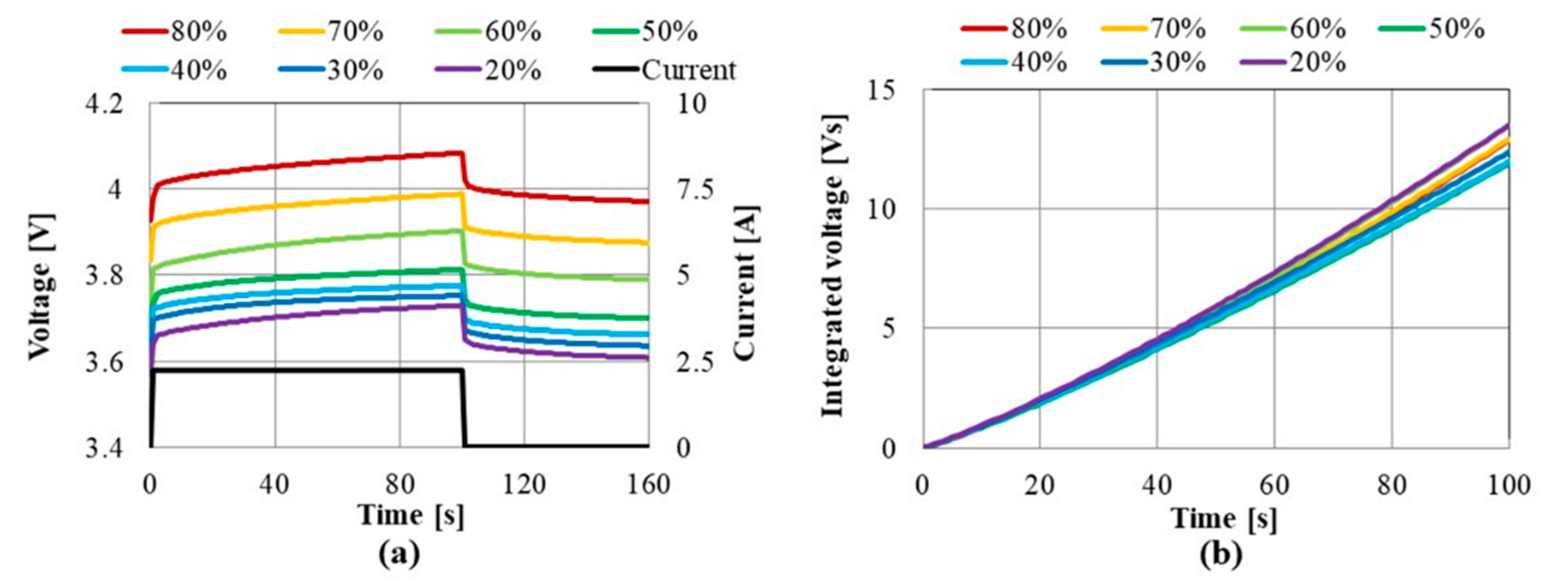
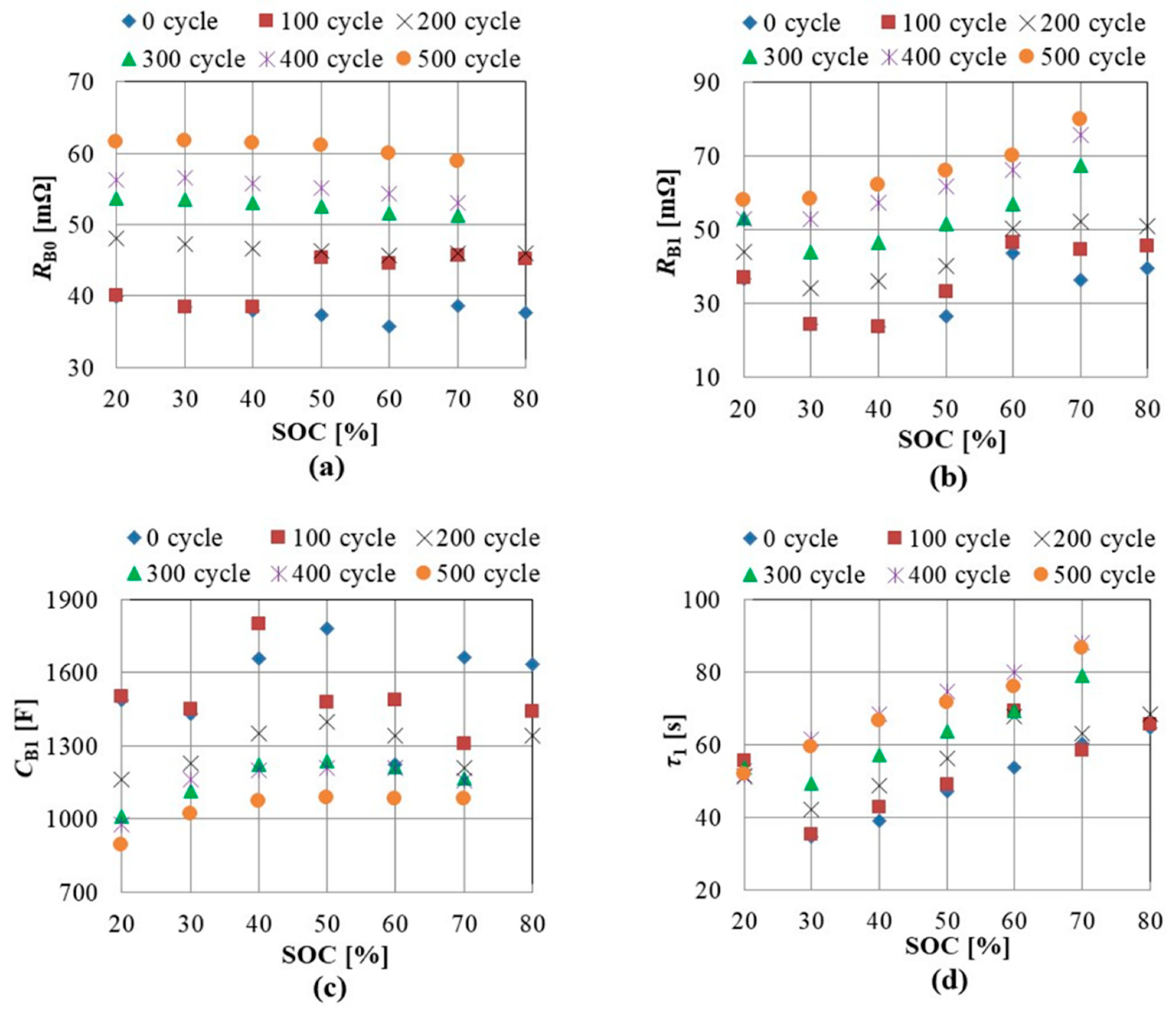

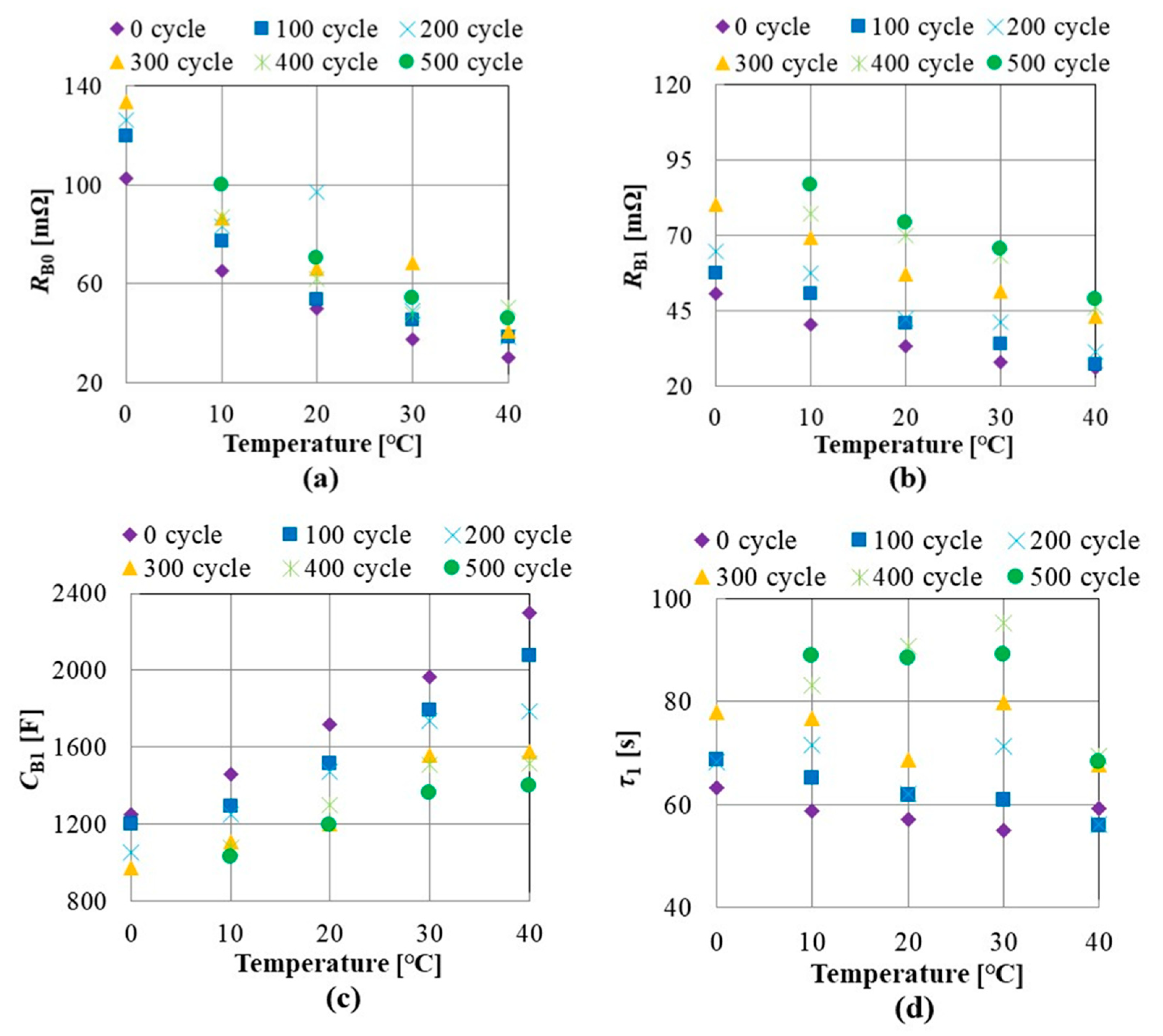
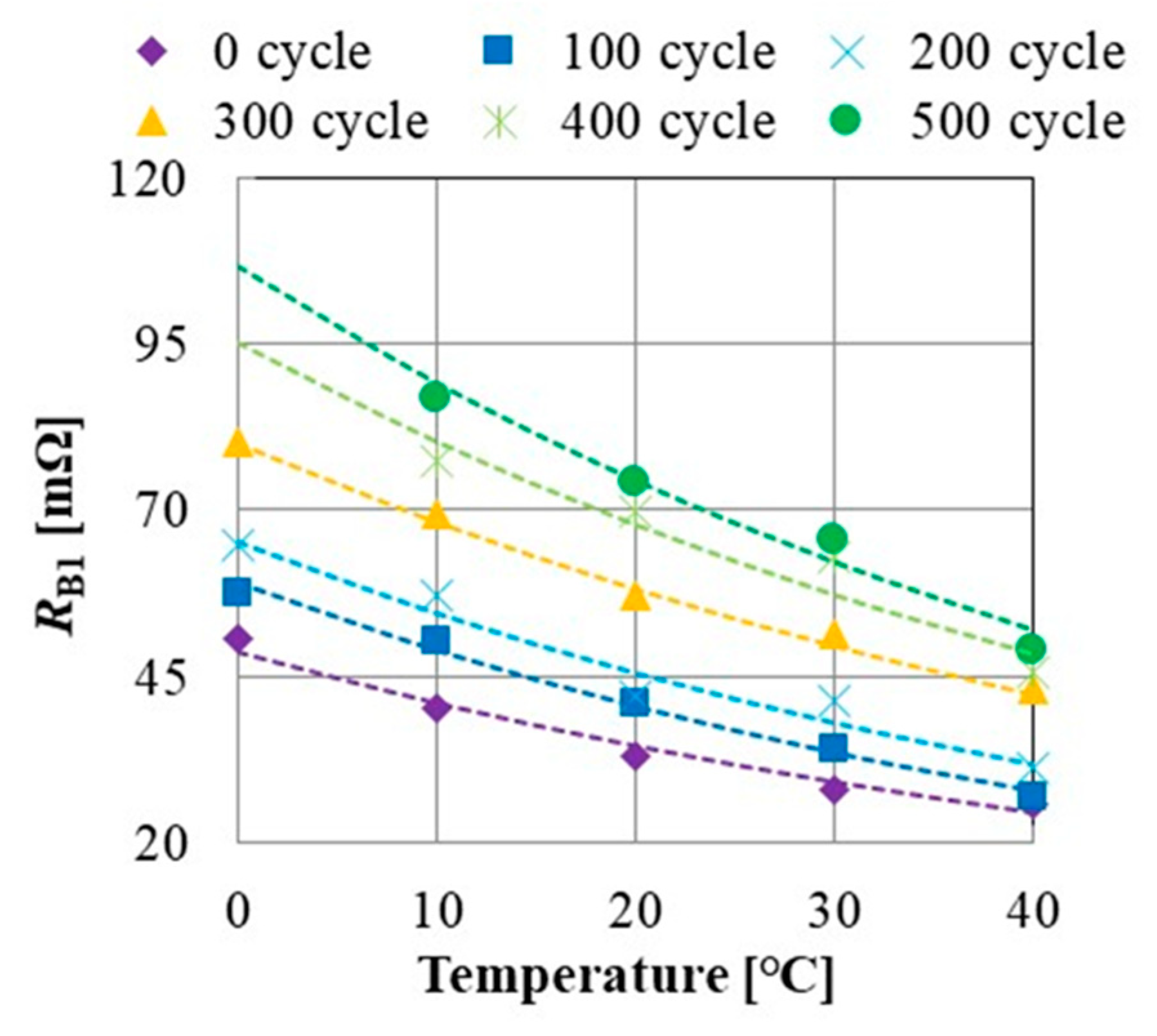
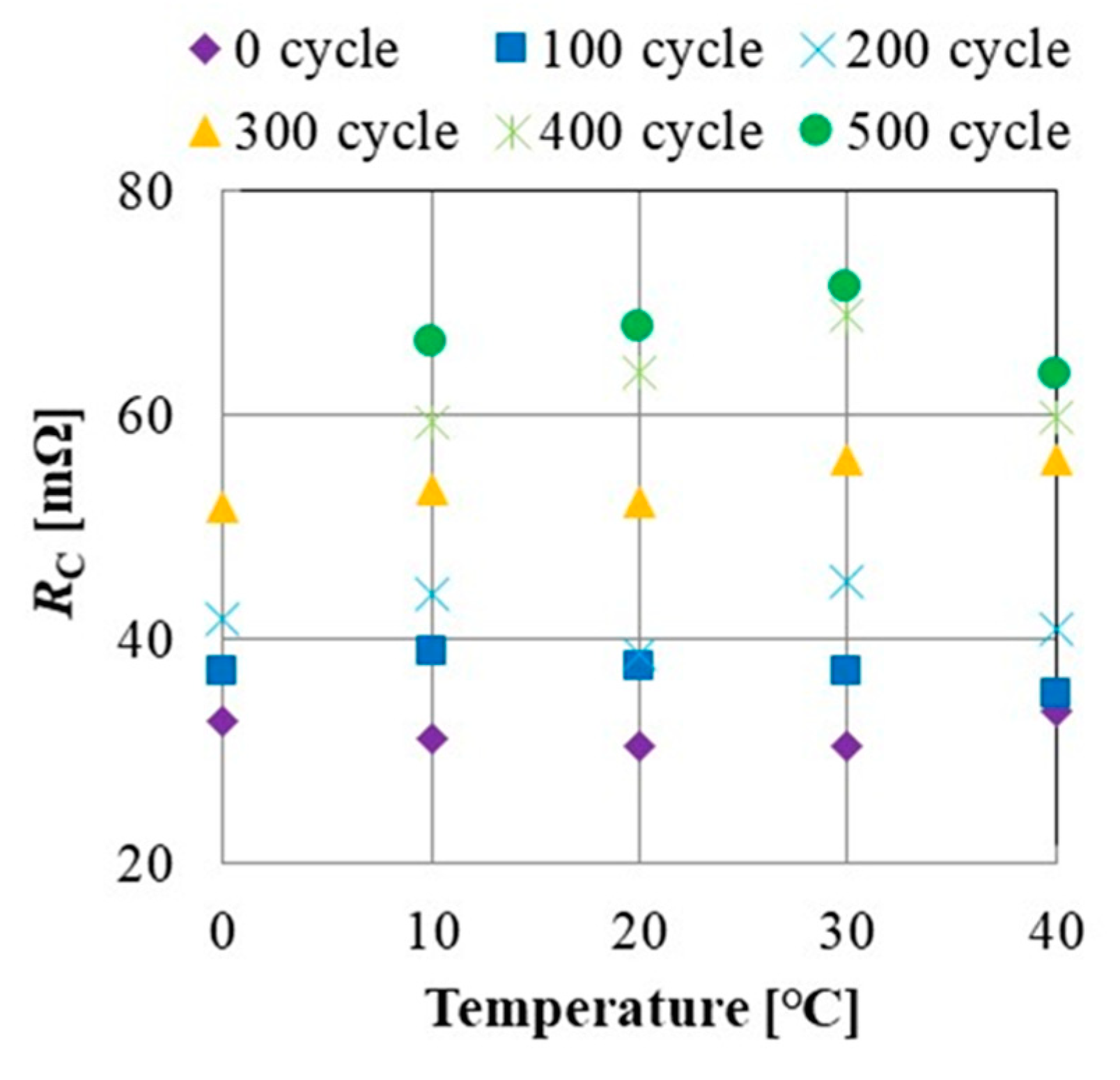




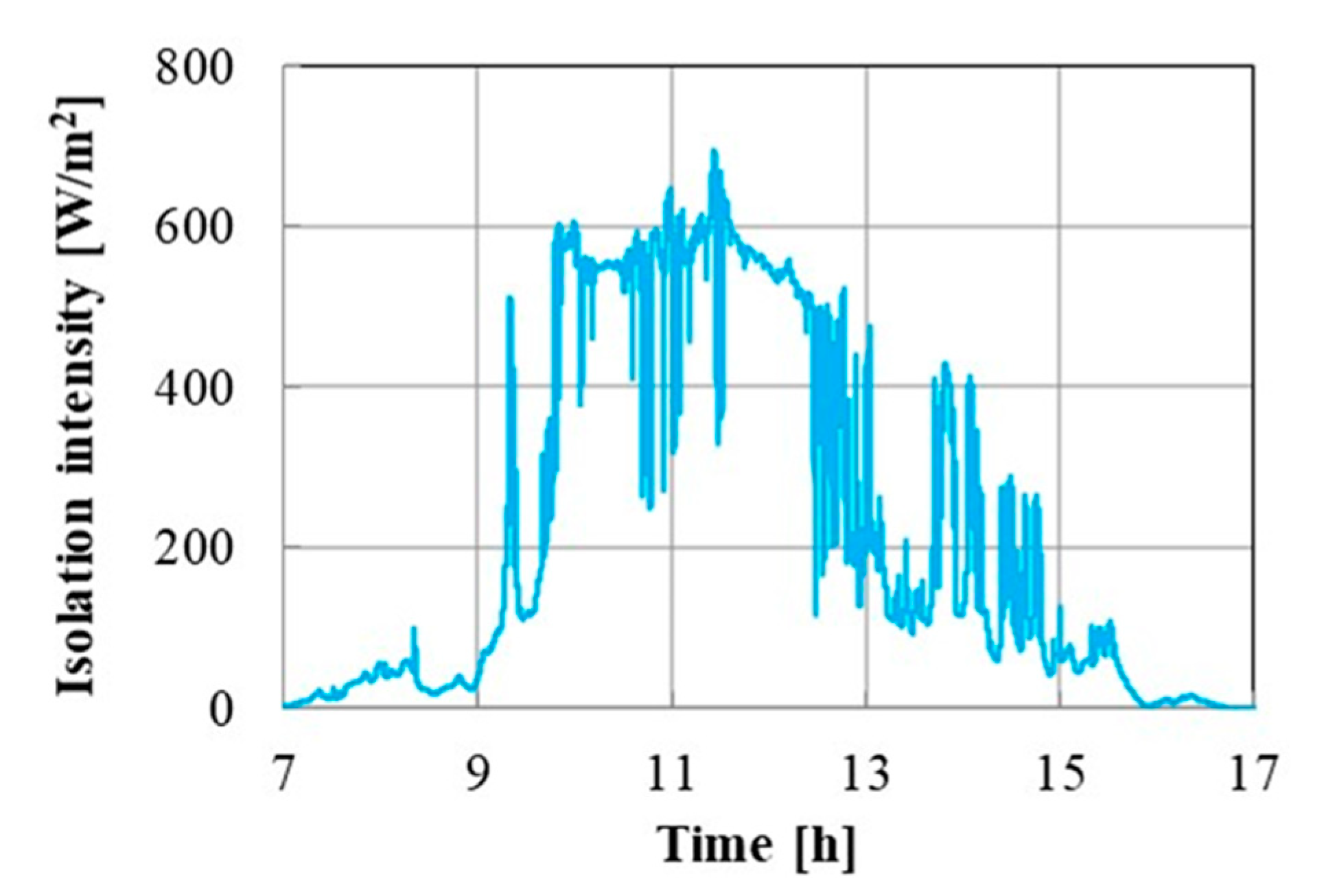
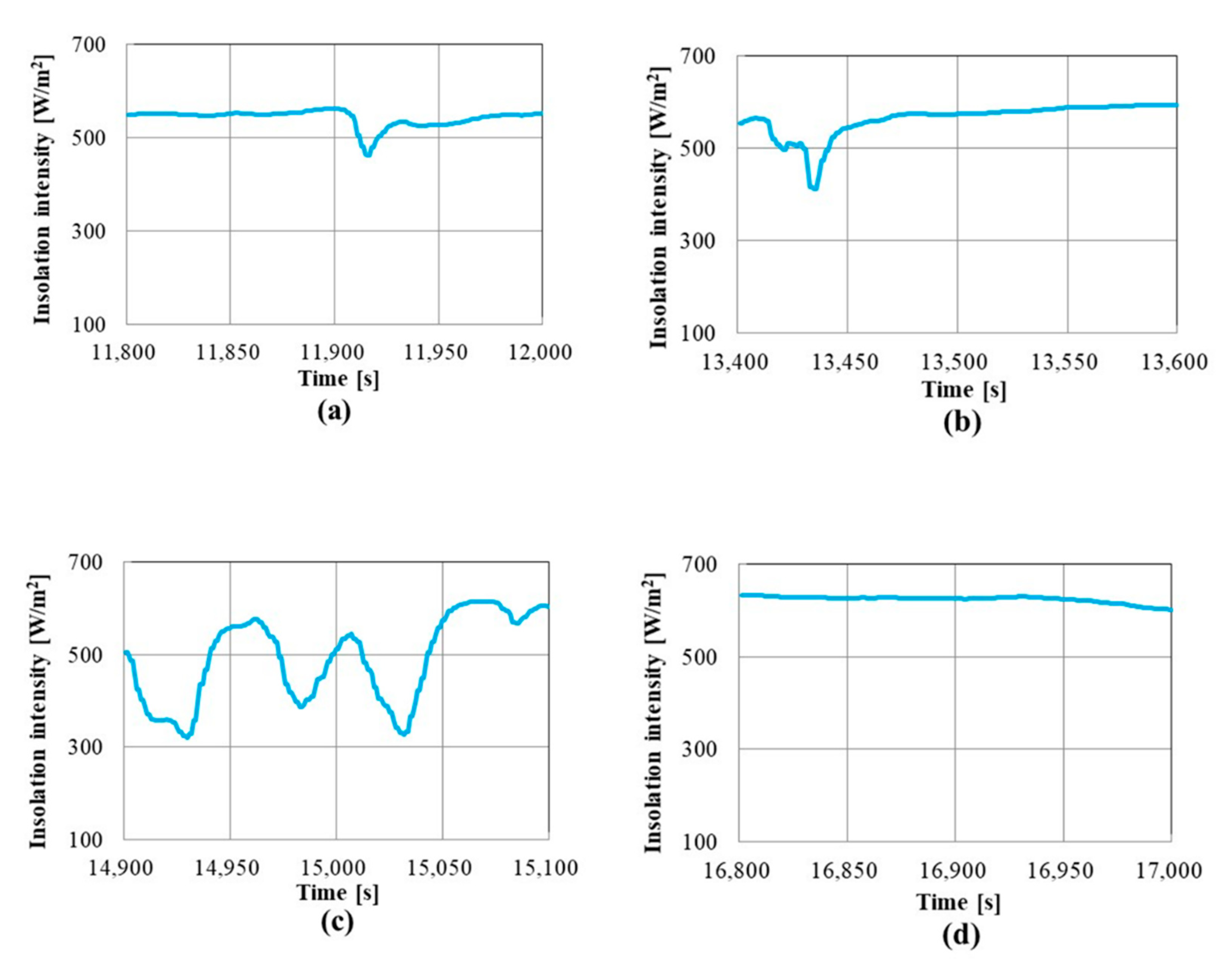



| Cycle | RC′ | TC |
|---|---|---|
| 0 | 48.6 | 58.8 |
| 100 | 59.3 | 52.6 |
| 200 | 63.4 | 55.5 |
| 300 | 80.1 | 62.5 |
| 400 | 95.3 | 58.8 |
| 500 | 106.8 | 55.5 |
Publisher’s Note: MDPI stays neutral with regard to jurisdictional claims in published maps and institutional affiliations. |
© 2021 by the authors. Licensee MDPI, Basel, Switzerland. This article is an open access article distributed under the terms and conditions of the Creative Commons Attribution (CC BY) license (https://creativecommons.org/licenses/by/4.0/).
Share and Cite
Yoshioka, N.; Nagaoka, N. A Deterioration Diagnosis Circuit of a Lithium-Ion Battery Using Microcomputer Implementing Z-Transform Convolution. Energies 2021, 14, 6868. https://doi.org/10.3390/en14216868
Yoshioka N, Nagaoka N. A Deterioration Diagnosis Circuit of a Lithium-Ion Battery Using Microcomputer Implementing Z-Transform Convolution. Energies. 2021; 14(21):6868. https://doi.org/10.3390/en14216868
Chicago/Turabian StyleYoshioka, Naoyuki, and Naoto Nagaoka. 2021. "A Deterioration Diagnosis Circuit of a Lithium-Ion Battery Using Microcomputer Implementing Z-Transform Convolution" Energies 14, no. 21: 6868. https://doi.org/10.3390/en14216868
APA StyleYoshioka, N., & Nagaoka, N. (2021). A Deterioration Diagnosis Circuit of a Lithium-Ion Battery Using Microcomputer Implementing Z-Transform Convolution. Energies, 14(21), 6868. https://doi.org/10.3390/en14216868






